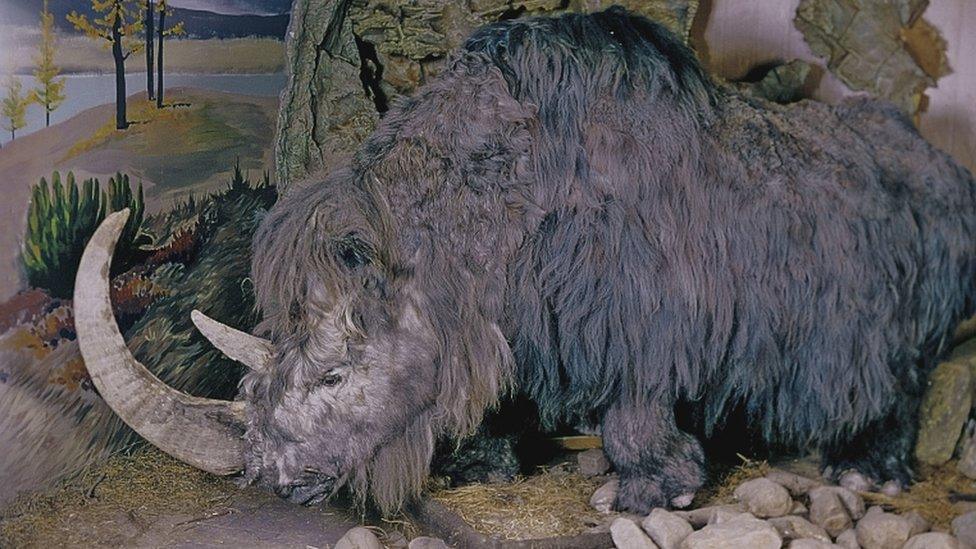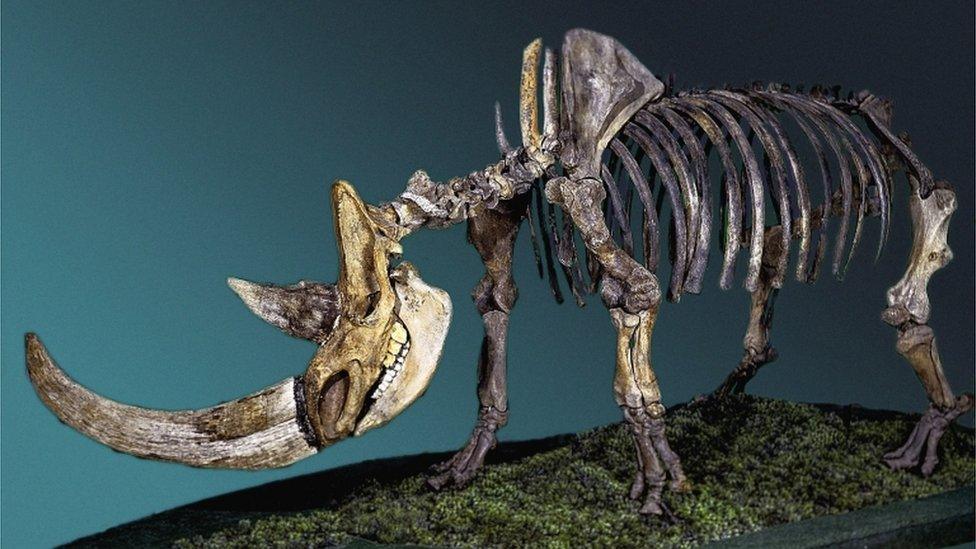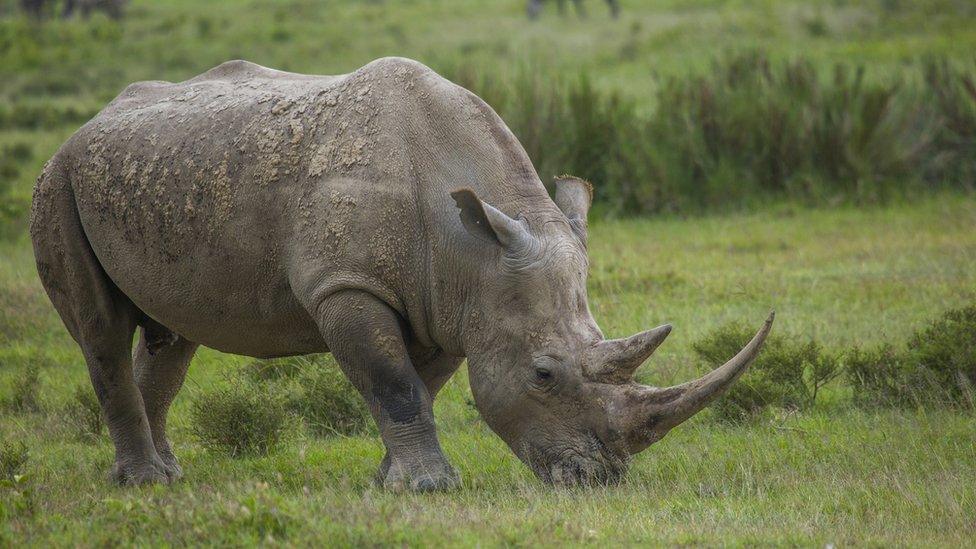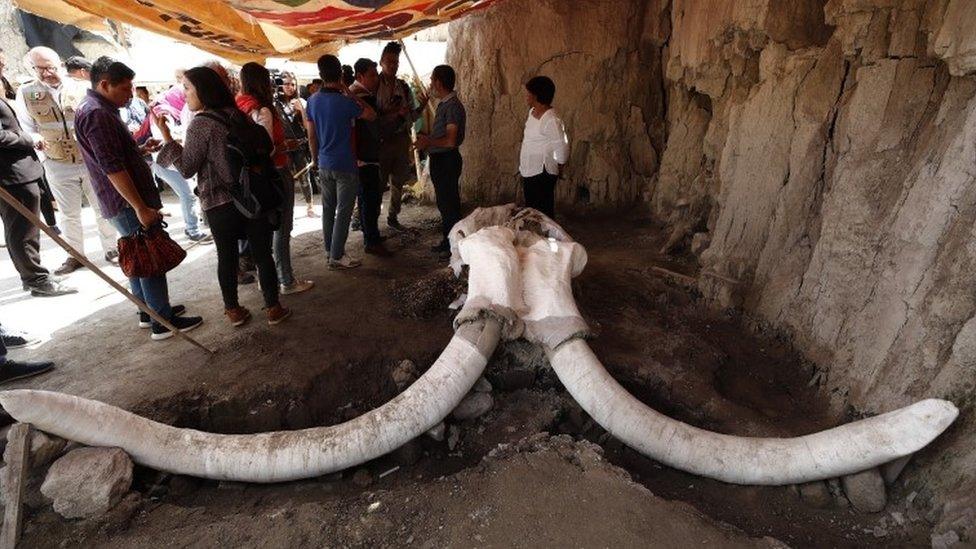Woolly rhinos became extinct because of climate change, new study suggests
- Published
- comments

The woolly rhino is thought to have lived 14,000 years ago
Have you ever seen one of these before? It's a reconstructed baby woolly rhino.
The furry animals are thought to have lived a whopping 14,000 years ago!
They roamed around parts of northern Asia and Europe and had very hairy bodies, a giant horn and a huge hump on their backs.
It was initially believed that the huge herbivores were wiped out after being hunted by humans, but findings from a new study suggests that climate change is responsible for their extinction.
Scientists looked at ancient DNA taken from bone, hair and tissue samples belonging to rhinos which had lived in Siberia.
The researchers discovered that the woolly rhino population had remained stable for thousands of years after humans arrived in north-eastern Sibera which suggests that humans hunting the mammals wasn't the main reason for them becoming extinct.

Woolly rhinos have hairy bodies and a huge hump on their backs
"...the decline towards extinction of the woolly rhinoceros doesn't coincide so much with the first appearance of humans in the region. If anything, we actually see something looking a bit like an increase in population size during this period," said professor Love Dalén who worked on the study.
The DNA studied also showed genetic mutations that helped the woolly rhinos adapt to colder conditions. One of these mutations is a type of receptor in the skin which is used to sense warm and cold temperatures and it's also been found in woolly mammoths.
Changes like this suggest the mammals, which thrived in the cooler climate found in northeast Siberia, may have seen a drop in their numbers because of the increase in temperatures during a short warming period towards the end of the last ice age.

The rhinos adapted to colder climates
"Although we can't rule out human involvement, we suggest that the woolly rhinoceros' extinction was more likely related to climate," said PhD student Edana Lord who also took part in the research.
The researchers now hope to look into what other effects the warmer climates had on animals at the time.
"We know the climate changed a lot, but the question is: how much were different animals affected, and what do they have in common?" said professor Dalén.
- Published21 March 2020

- Published21 November 2019
- Published8 November 2019

